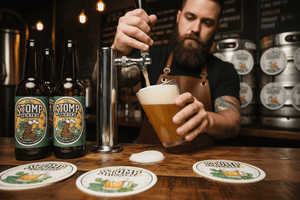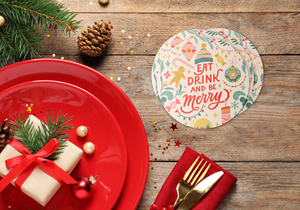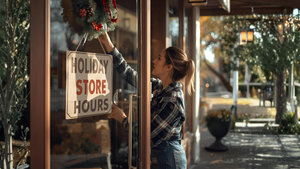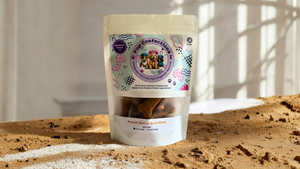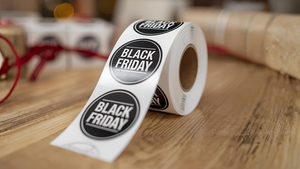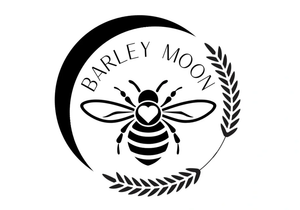How to Kick Your Canning Business Up a Notch

If you're running a canning business, you know that attention to detail can make all the difference. The vibrant array of products you create, from jams and honey to candles, deserve to be presented in a way that captures attention and leaves a lasting impression. That's where the power of canning labels comes into play. They're like the secret ingredient that turns your products from "ho-hum" to "jam-tastic!"
But what’s the secret to an effective canned product? How do you design a label that’s as irresistible as the contents inside?

What Is the Importance of Labels in Canning?
When it comes to canned products, the label is more than just a piece of paper stuck on a container. It's the first thing your customers see, a visual representation of your brand, and a peek into what's inside. A well-designed label can convey your product's personality, showcase its quality, and create a connection with your target audience.
And it's not just about aesthetics. Labels carry essential information such as ingredients, usage instructions, and batch numbers, making them crucial for both marketing and regulatory compliance. Think of labels as the Swiss army knife of your canned goods — versatile and essential!
How to Create Effective Canning Labels
Labels serve as the initial point of contact between your customers and your canned goods. As such, your approach toward creating these labels is of the utmost importance. To create labels that truly shine, consider these critical factors:
Label Material
One of the most fundamental choices you'll make is selecting your label material. The option you choose should align with your product, packaging, and the environment it will be exposed to. Here are some popular label materials to consider:
- Paper Roll Labels. Paper labels are versatile and cost-effective, making them suitable for a wide range of products, including candle and honey labels. While paper labels might not be ideal for products exposed to water or humidity, they are excellent for short-term applications. White gloss paper labels offer a classic look, while white matte paper labels allow for writing directly on the label.
- Waterproof Roll Labels. For products that will be exposed to water, moisture, or refrigeration, waterproof labels are the way to go. Made from waterproof materials like white or clear biaxially oriented polypropylene (BOPP) film, these labels maintain their integrity even in challenging conditions. For example, a waterproof label would be ideal for a jam container that will ultimately end up in the fridge, and it protects from spills and drips.
- Vinyl Stickers. Vinyl stickers are durable and waterproof, making them suitable for long-term use and outdoor conditions. They are resistant to abrasion and some chemicals, making them a great choice for products that might encounter rough handling, like at an event. They’re also a great option for promoting your brand as a whole. Vinyl stickers are supplied as individual pieces, rather than on rolls, so you can hand them out at your next farmers market event!
Design & Color Scheme
Creating compelling canning labels is an art that involves carefully considering design elements. For example, colors have the power to evoke emotions and enhance focus, making them a crucial aspect of label design. Aligning your chosen colors with your brand's identity and desired mood is essential for creating a lasting impression. For instance, vibrant colors like crimson red can convey the passion and excitement behind your product.
Fonts play a vital role in shaping your brand's voice and message. Handwritten fonts offer a crafty touch, while other fonts can evoke various emotions. The best font for your label is one that aligns with your brand's personality while maintaining readability. Beyond aesthetics, fonts influence the overall tone of your product's message.

Top Labels vs. Side Labels
The position of your label can impact visibility and branding. Top labels catch customers' attention from above, while side labels can help catch potential customers’ attention from a distance. The choice depends on a few considerations:
Top Labels:
- Visibility: Top labels are easily visible when the jars are arranged on top of a surface that is below eye level. This makes top labels ideal for products that are going to be displayed at a farmer’s market stand or on a table in a shop.
- Clean presentation: Top labels are less likely to be obstructed by other products on a crowded table, allowing for a more consistently pleasing visual display.
- Information Accessibility: Information on top labels can be read at a glance, which is helpful for noting important details like the date of canning.
Side Labels:
- Additional Space: Side labels offer more surface area for including detailed information. You can list ingredients, nutritional information, and even recipes if desired.
- Personalization: Side labels allow for more creativity in design and personalization. You can add decorative elements or storytelling about the contents.
- Practicality: If you have limited space on the top of your jars due to the type of lid you're using or the jar's shape, side labels may be a more practical choice.
In most cases, a combination of top and side labels is an ideal solution. You can use the top label for quick identification and the side label for more detailed information. The choice between top and side labels ultimately depends on your priorities, the aesthetics you prefer, and the information you want to convey with your homemade canned goods.
Must-Have Label Information
Labeling isn't just an artistic flourish. It provides your customers with essential information that can help them make an educated purchasing decision. Besides your brand name and logo, consider including data like an ingredients list and expiry dates. For consumables like jams and honey, serving suggestions and recipes can help your customers get the most out of your products.
Label information can also be useful to you, the canner. For example, adding batch numbers to your labels makes it easier to track specific batches, whether for monitoring quality issues or to identify exceptional flavors.

Kick Your Canning Label Up a Notch with Stomp
Designing and picking out the perfect canning labels might seem like a puzzle at times, but it's also your chance to give your brand a personality and make your products shine.
At Stomp, we understand the intricacies of label materials, design, and branding. Our range of label materials, from paper to waterproof options, ensures that your products are adorned with the best-suited labels. Whether you're a newcomer or an established player, our design experts are here to guide you through the process. Elevate your canning small business with eye-catching labels that reflect the essence of your products and capture your customers' imaginations.
Explore our custom labels today, and let us be a part of your success story.
- Tags: Craft Foods Small Business
- Nashira Edmiston

